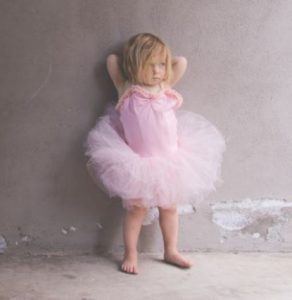It’s all over the broadcast and social media. Women are angry. Really angry. And they have been angry for some time. But this time it seems different. What the Harvey Weinstein case and the #metoo campaign have triggered seems to be an avalanche of women’s voices shouting “we’re not happy with things as they are”.
Entrenched disparity
We have all heard it so many times – women’s issues, gender issues, feminist movement or whatever you want to call it – you would think it has all been said and sorted. But in fact, what Harvey Weinstein and the follow-up circus has uncovered is how deep the levels of misogyny in our society are. Wherever you look. The case of the powerful Hollywood producer (and his many soulmates who think that women are incapable of telling whether it is a hand or tablecloth touching their knee) shows how violence, power and workplace security are intertwined.
While violence against women (in the workplace, at home, on the street, or well hidden) is the extreme end of the scale, less extreme but no less important (though more complicated) is the power network in our society that holds women back, ensures they are systematically paid less, and means they are usually the ones that do the third home/children shift.
The wrong message for children?
There are many wonderful campaigns that aim to empower women and girls around the world. But sometimes it seems they are not efficient enough and that those who should be listening never really do. This is not something that concerns only adult women and men. The building blocks of little girls’ and boys’ worlds are far too often a straightforward line to our ‘adult’ world.
There have been some alarming reports recently on rising pupil-on-pupil sexual abuse (that is already at the level of primary school age) and the failure of authorities to act appropriately. Other reports point at rising levels of poor mental health among girls and boys.
With girls, this anxiety and depression is linked to a rise in body dissatisfaction and studies have also shown that poor body image makes girls less assertive and exposes them to serious health risks. But it is not only girls. Of 4,622 male suicides in the UK in 2015, 601 were committed by young men aged 10-29 years. This clearly shows that children and young people are getting the wrong message.
Language is key
Our world is strongly visual and what starts with the blue and pink theme and gradually changes into the current beauty-ideal straitjacket (both for women and men) is undoubtedly one source of the ‘wrong message’.
But I believe the other crucial source is the way we use language – all that hides under the label of acting “like a girl” or “like a man”. But what are also significant but also less straightforward are the linguistic strategies we use when we talk about gender-related topics such as domestic violence, for instance how we talk about how many women were beaten up in their homes last year but not about how many men beat women.
Stories and stereotypes
But it can be even more subtle. Look at the books children have been reading from the beginnings of children’s literature in the 19th century up to the present day. Girls are queens, princesses, brides, nurses or maids. Men are knights, kings, princes, horsemen, drivers, hunters, soldiers, sailors, pirates, captains and so on. How can this not create gender expectations? How can this not influence us?
 I like the @HeForShe campaign slogan ‘What we share is more powerful than what divides us’. But we need to start with this very early on. We need to explain to little girls and boys as soon as possible that being pretty and dressed in pink does not necessarily need to be the main goal in girls’ lives, that girls can become presidents as well.
I like the @HeForShe campaign slogan ‘What we share is more powerful than what divides us’. But we need to start with this very early on. We need to explain to little girls and boys as soon as possible that being pretty and dressed in pink does not necessarily need to be the main goal in girls’ lives, that girls can become presidents as well.
Challenging stereotypes in children’s education, for example the approach taken by Lanesend Primary School shown on the BBC documentary No More Boys and Girls, is a very good strategy. Children are capable of understanding that gender and biological sex is not the same thing, boys and girls can be equal, and equality does not mean that they have to share the same loos.
Revealing influences
Reading is one of the areas where children can and should get a deeper understanding of what is at stake. Research shows reading for pleasure really does change children’s lives and influences them. The GLARE project (Exploring Gender in Children’s Literature from a Cognitive Corpus Stylistic Perspective) aims to understand more deeply the ways children’s literature acts as a formative influence.
It will consider the discursive construction of gender in children’s literature and its development over time. It will also look at the most frequently repeated linguistic patterns and will aim to explain how they account for the creation of meaning in the mind of the reader. GLARE stresses that the representation of real and fictional people is related – in terms of the background knowledge that readers bring to texts and the patterns used in them.

It is our responsibility to change things. Next time we choose a book for our children, we, as parents and educators, should think about it twice. Watch this space for more ‘food for thought’ and/or follow us at Twitter @GlareProject. If you are interested, please do get in touch.
Please cite this blog post as follows: Čermáková, A. (2018, 29 November). Why GLARE? [Blog post]. Retrieved from https://blog.bham.ac.uk/glareproject/2017/11/29/why-glare/
